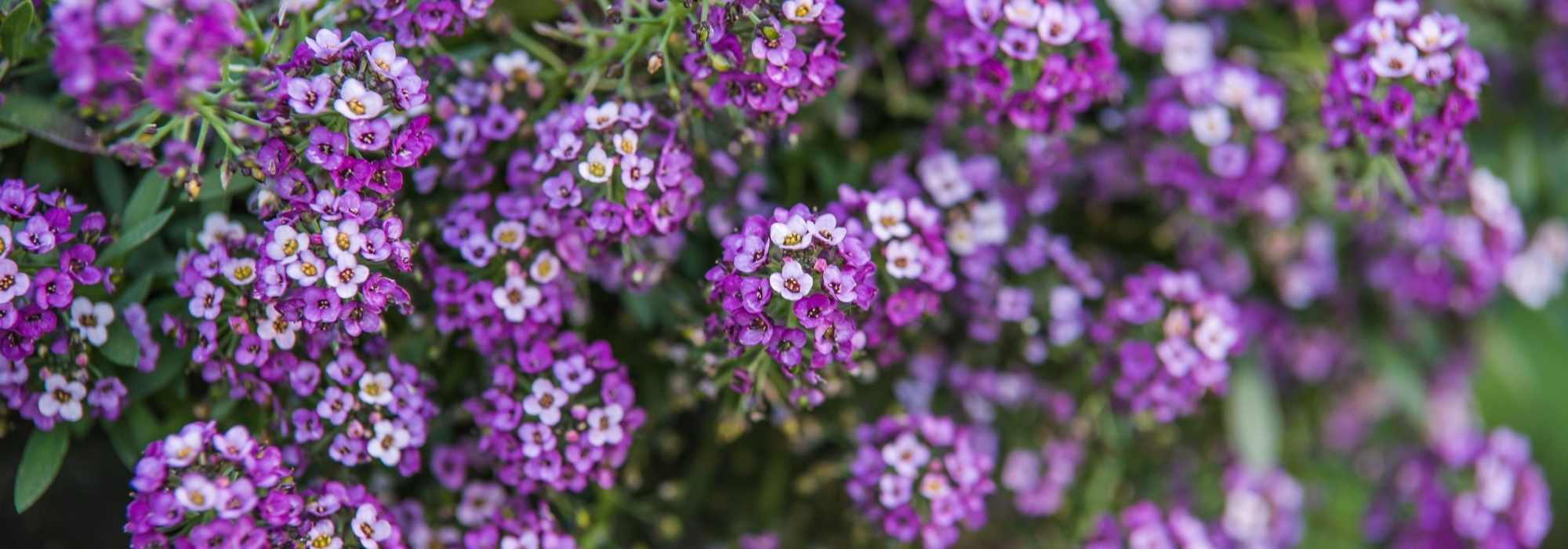
Lobularia - Sweet Alyssum: sowing, planting, and growing
Contents
Sweet alyssum in a few words
- The silver basket flowers from spring to autumn!
- The Lobularia maritima is an annual plant that forms cushions of small white or purple flowers depending on the variety, very melliferous and fragrant.
- Undemanding, it is ideal for sunny, well-draining soils, even poor and chalky ones.
- It is an easy plant and floriferous, requiring no care: simply sow or plant it in spring.
- Tolerating summer drought perfectly, the sweet alyssum is a plant for rockeries, flowering walls, and sunny borders, but also perfect for containers.
The word from our expert
When I see a Lobularia maritima or sweet alyssum, or more simply, snow-in-summer, this plant always seems to come straight from my great-grandmother’s garden. She particularly appreciated, indeed, robust, floriferous, and fragrant plants: three qualities that sweet alyssum possesses.
Sweet alyssum (yes, yet another name!) is a rockery plant belonging to the large Brassicaceae family (cabbages, turnips, radishes, mustard…). It is thus a botanical cousin of aubrieta and golden alyssum (Alyssum sp.). Unlike these two, Lobularia maritima is not a perennial but an annual that tends to self-seed in the most unexpected places in the garden: between paving stones, in the crevices of walls, in planters…
A drought-tolerant plant par excellence, Lobularia thrives in full sun in poor soils, even those that are infertile and chalky, as long as they are well-drained. It will work wonders in rockeries, as borders for sunny flower beds, and even in pots, thanks to a long flowering period of clusters of small white, mauve, or violet flowers, depending on the variety, with a scent reminiscent of “honey candy”. These flowers don’t just appeal to us, either, as sweet alyssum is visited by a great number of insects: bees, bumblebees, hoverflies, butterflies…
It is a robust, trouble-free, easy-to-grow annual that grows quickly, with snow-in-summer rapidly covering a large area, often where other plants struggle to thrive. In short: let’s plant or replant sweet alyssum in the garden! It’s an annual that has proven itself. You won’t be disappointed.
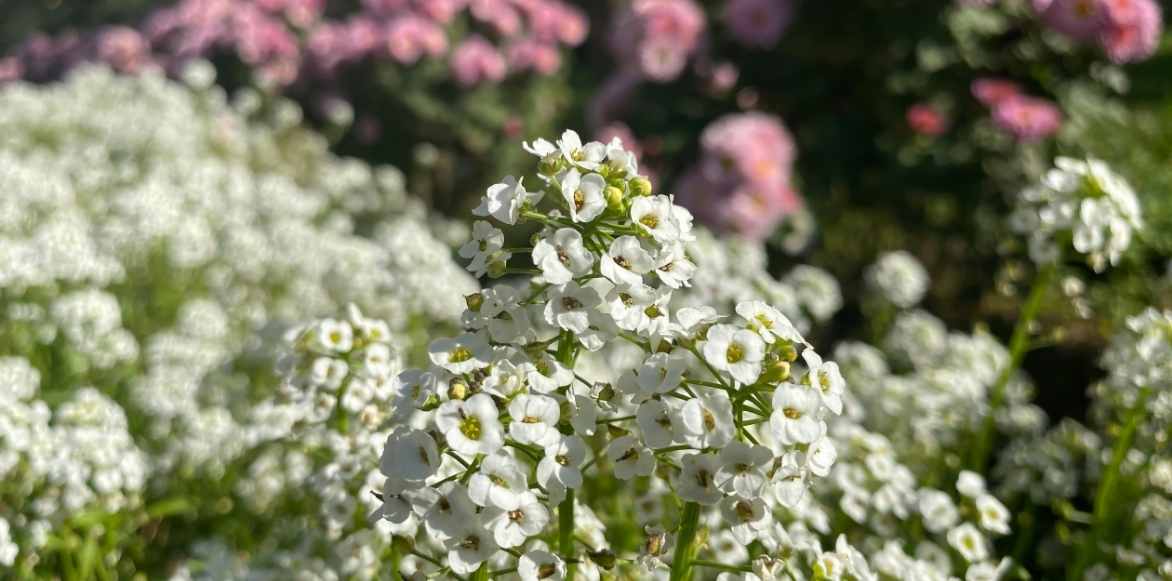
Botany and description
Botanical data
- Latin name Lobularia maritima
- Family Brassicaceae
- Common name Sweet alyssum, Seaside alyssum
- Flowering June to October
- Height 40 cm
- Exposure sun
- Soil type fertile and light
- Hardiness -8°C
The Lobularia maritima (syn. Alyssum maritimum) or Sweet alyssum, also known as Seaside alyssum, is an annual plant belonging to the Brassicaceae family (formerly known as Cruciferae). The genus Lobularia includes 5 species, some perennial, others annual: Lobularia maritima is the most commonly cultivated in our gardens. The type species has white flowers and grey foliage, earning it the nickname “Silver Basket”. There are many horticultural varieties, sometimes more compact or with other flower colours (pink, purple, crimson…).
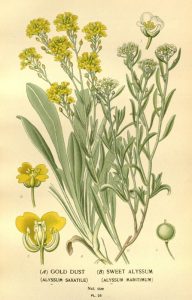
Alyssum maritimum, botanical plate from 1896
The Lobularia maritima is a plant native to the Mediterranean basin. However, this plant has naturalised in other parts of the world: in the Bay of Biscay, along the coast, and even in California. It thrives among rocks, in sandy soil, but can occasionally be found on slopes or wastelands with calcareous soil. Although Lobularia is cultivated as an annual, it is not uncommon to find self-sown plants in the most unexpected places: rockeries, borders, paving, walls, and even in pots, thus perpetuating the plant.
Sweet alyssum is a plant that grows in small clumps up to 30 cm tall, highly branched. The base of the clumps is slightly woody. The foliage is alternate and sessile, with a glaucous colour and grey undersides. The leaves are typically villous, simple, and narrow.
The flowering period is very long and can extend from March to October in mild climates, starting from June further north. The inflorescence begins as a rounded raceme (a type of flower cluster) that elongates over the months. Each flower, 3 to 4 mm in diameter, reveals 4 sepals, 4 rounded petals (typical of the family!), and 6 stamens with yellow anthers. The flowering is particularly fragrant, with a scent reminiscent of honey sweets. Pollination is entomophilous, carried out by insects, which are numerous and attracted to the sweet alyssum flowers.

Sweet alyssum in white and mauve. On the right, a close-up of the flower
The infructescence is elongated and bears numerous villous siliculas (small siliquas, typical of Brassicaceae). Each silicula contains two seeds. Seed dispersal is anemochoric, with the seeds being carried by the wind.
The caterpillar of the Iberian Pierid (Pieris mannii) feeds on the foliage of Sweet alyssum. In fact, lobularias are used in the United States in cabbage fields to attract Pierid caterpillars. This is an organic and natural way to divert pests to another plant.
As the plant grows quickly and covers the ground rapidly, agronomic research is underway to use lobularias as ground cover in fields. Not to mention that the flowering attracts a large number of pollinating insects. Consider this for your own vegetable garden!
Our most beautiful varieties
The sweet alyssum or Lobularia maritima is the most cultivated species of the genus in our region. It has been declinated into numerous varieties: with pink, mauve, or violet flowering; or sometimes more compact. Here are our favourites:
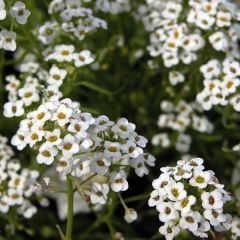
Lobularia Snow Princess
- Flowering time August to November
- Height at maturity 40 cm
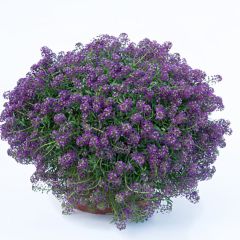
Lobularia maritima Princess in Purple - Sweet Alyssum
- Flowering time August to November
- Height at maturity 40 cm
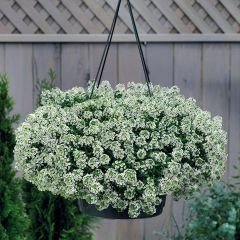
Lobularia maritima Snow Crystals
- Flowering time June to September
- Height at maturity 15 cm
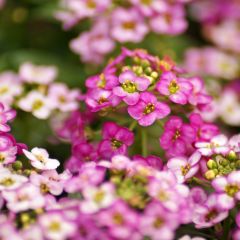
Sweet Alyssum Rosie ODay
- Flowering time July to October
- Height at maturity 12 cm
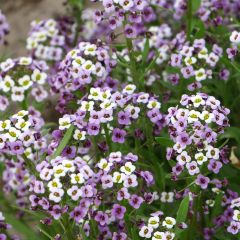
Lobularia maritima Royal Carpet
- Flowering time July to November
- Height at maturity 15 cm
If you can’t decide on the colour of your alyssums, there are also mixes available.
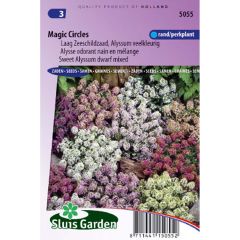
Sweet Alyssum Magic Circles Mix
- Flowering time July to November
- Height at maturity 15 cm
Discover other Lobularia - Alyssum
View all →Available in 1 sizes
Available in 2 sizes
Available in 2 sizes
Available in 1 sizes
Available in 1 sizes
Planting alyssums
Where to Plant?
Lobularias thrive in sunny spots but can tolerate partial shade. The soil should be light and well-draining, preferably alkaline to neutral. They will do well in ordinary, rocky, or sandy soil, even very dry. Excessive moisture will cause them to wither. Sweet alyssum can grow in very little soil.
Like gold dust (Alyssum sp.), sweet alyssum makes an excellent ground cover for slightly dry areas (such as a sunny slope) where other plants struggle to establish. It can be used to brighten up a rock garden or sun-baked flower beds, or as a border for a sunny flower bed. Sweet alyssum can also be tucked into the top of a dry stone wall or nestled between paving stones or in the crevices of walls.
Note that lobularias also thrive in pots, planters, or hanging baskets on sunny balconies and terraces.
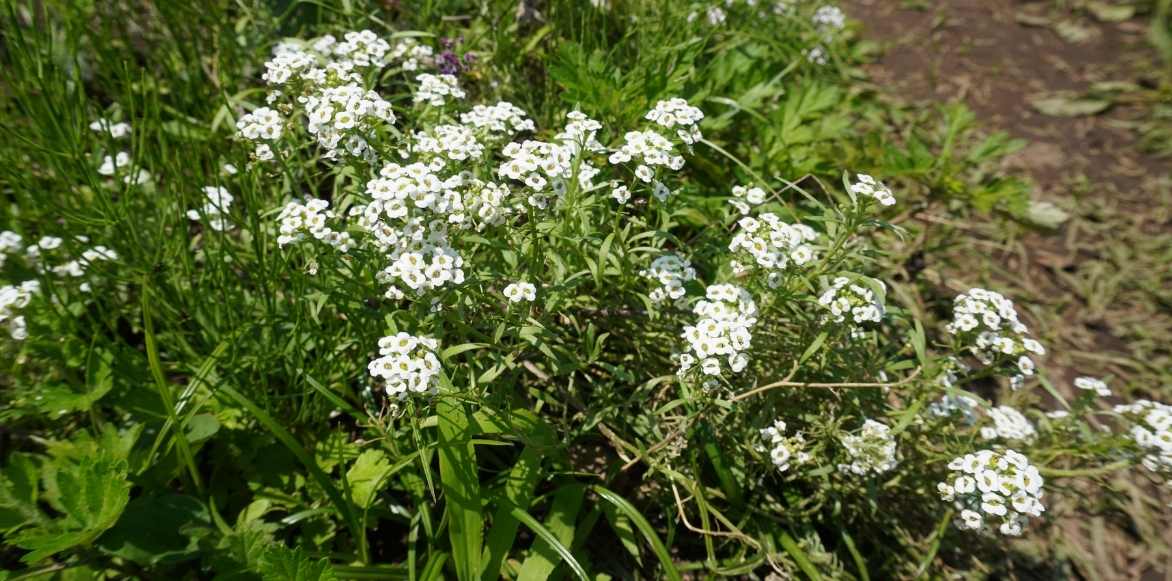
Lobularia or sweet alyssum
When to Plant?
Lobularia plug plants can be planted in spring (ideally from March to May), up to early summer, either in the ground or in containers. Sowing is done in spring, but can also be attempted in autumn in mild climates.
How to Plant?
In the Ground
- By sowing, prepare the soil carefully: weed, loosen well, and lighten with a bit of compost if needed. Rake the soil smooth and sow thinly by scattering. Cover with a little compost and water gently. Continue watering, without overdoing it, for at least two months after sowing. Thin out the young plants if necessary if sown too densely;
- By planting small buckets or plug plants: dig a hole twice the size of the root ball. Loosen the soil well and add some compost, or even a few gravels, if it’s too heavy. Plant your sweet alyssum and fill the hole with the excavated soil, but without burying the collar. Lightly firm the soil around the base with your hands. Water thoroughly to avoid any air pockets between the soil and the roots.
Allow for 5 to 7 sweet alyssum plants per square metre!
In Pots
- Spread a good layer of drainage (gravel or clay pebbles) at the bottom of the container, which must have one or more drainage holes;
- Plant the bucket in a mix of ordinary soil, Mediterranean plant compost, and coarse sand;
- Water to encourage establishment, then once every two weeks;
- Place your pots in full sun.
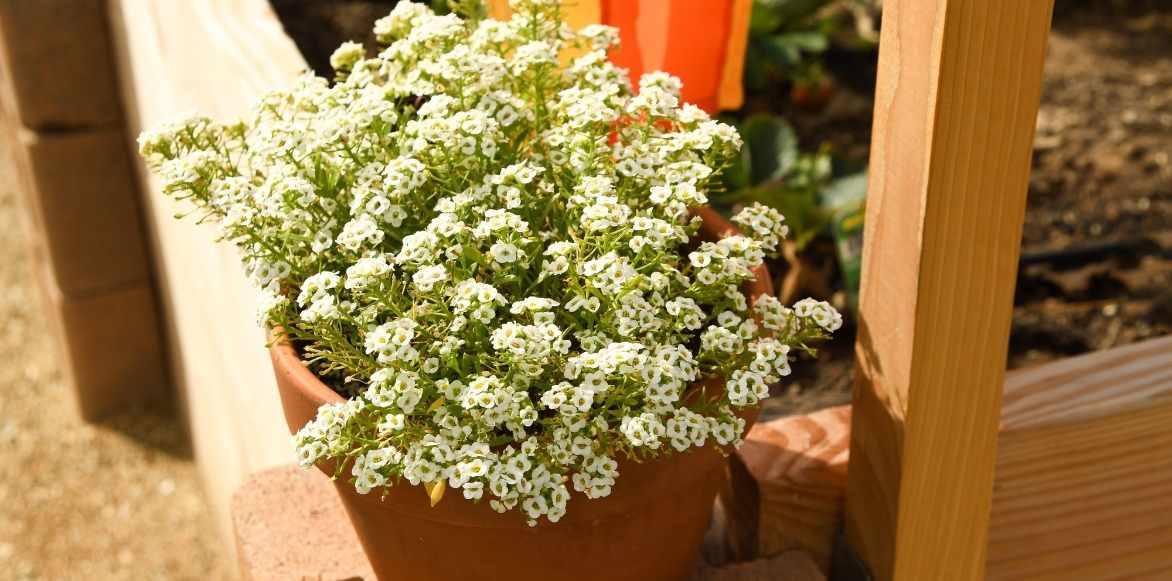
Sweet alyssum planted in a pot
Maintenance, Pruning, and Care for Lobularia
Watering
Lobularias are very drought-tolerant. You can therefore forget about watering once flowering begins in spring and when the plant covers the soil well.
In pots, allow the surface of the substrate to dry out between waterings.
Pruning
Don’t hesitate to give a quick trim with garden shears or scissors to the clusters of faded flowers. This will encourage the plant to produce more flowers and thus prolong the flowering period.
You can also pinch the young shoots in spring to help the young plant become more ramified.
Fertiliser
In pots only, alyssums can be given a liquid fertiliser for flowering plants every 3 to 4 weeks.
In open ground, avoid enriching your soil for alyssums. Indeed, the plant may produce foliage at the expense of flowering.
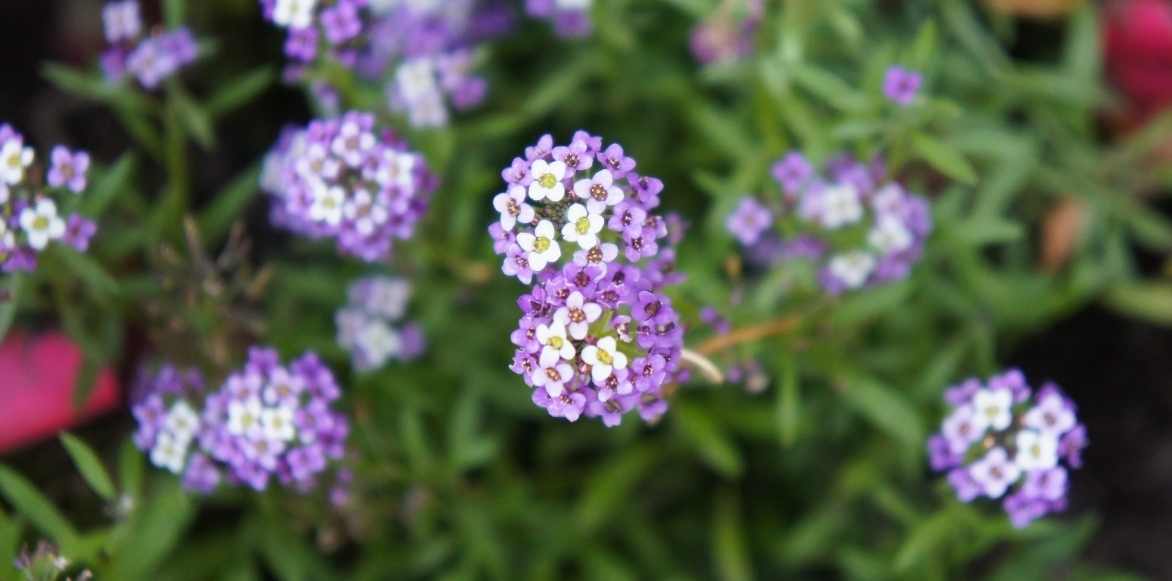
Possible diseases and pests
Young Lobularia plants attract slugs and snails early in the season. Keep an eye on your sweet alyssums planted in the ground.
The plant also harbours insects: cabbage white caterpillars, aphids, thrips… without being significantly affected. In the case of a severe aphid infestation, you can spray water mixed with black soap.
In hot and humid weather, alyssums are sometimes prone to powdery mildew (white spots or patches) or downy mildew (rust-coloured pustules). However, this rarely happens and mainly in poorly drained soil. Prune the affected parts and avoid watering the foliage. To prevent and combat powdery mildew, follow our advice: “Powdery mildew or white mould: prevention and treatment”.
How to propagate your alyssums?
The simplest method remains sowing. In fact, the plant often takes care of reseeding itself in the most unexpected places in the garden: between paving stones or rocks, for example.
By sowing directly in the ground in spring
- Prepare the soil carefully: weed, loosen well, and lighten with a bit of compost if needed;
- Smooth the soil with a rake and sow thinly by scattering;
- Cover with a little compost and water gently;
- Continue watering, without overdoing it, for at least two months after sowing;
- Thin out the young plants if necessary, spacing them 20 cm apart, if you’ve sown too densely.
By sowing in a seed tray, under a cold frame (protected from frost) at the end of winter:
- Sow thinly in well-sifted seed compost;
- Cover with a little compost and water gently;
- Continue watering, without overdoing it;
- After two months, you can transplant them into pots or directly into the ground.
Here are a few ideas for plant combinations:
The Silver Basket is unparalleled for greening a neglected spot in the garden, whether deemed too dry or on overly poor soil.
In a dry or gravel garden, the Sweet Alyssum adds pep with its flowers, which range from white to mauve or violet. The Lobularia works wonders on slopes, in dry rockeries, sun-baked flower beds, and even in pots on the terrace.
Sweet Alyssum pairs easily with other rockery perennial plants: for example, alyssums or Golden Baskets, but also aubrietas, ageratums, or even rock campanulas.
It loves to be surrounded by Mediterranean perennial plants, all as undemanding as itself: santonias, artemisias, nepetas, echinops, eryngiums, lamb’s ears, helianthemums… not forgetting southern bushes like lavenders, rosemary, bushy sages…

In a rockery, a beautiful combination of sweet alyssum, ageratum, artemisia, and aubrieta
Also worth reading
→ Discover our most beautiful varieties of Sweet Alyssum in our online nursery.
→ Once both included in the same botanical genus, Basket-of-Gold and Sweet Alyssum share many similarities. Learn more by reading: Sweet Alyssum, Basket-of-Gold: sowing, planting, and care.
→ Want to create potted arrangements and planters using plug plants? Here’s everything you need to know: How to plant plug plants in planters and hanging baskets?
- Subscribe!
- Contents































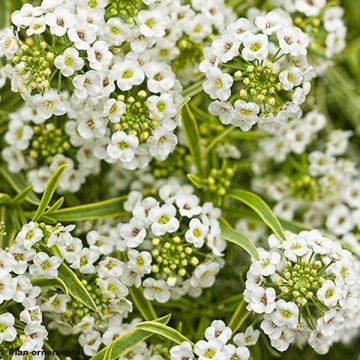


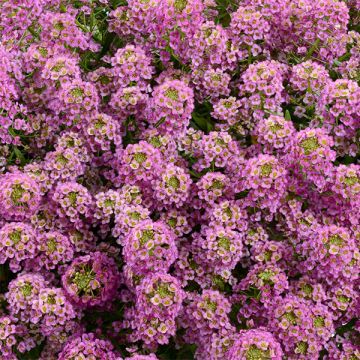

Comments